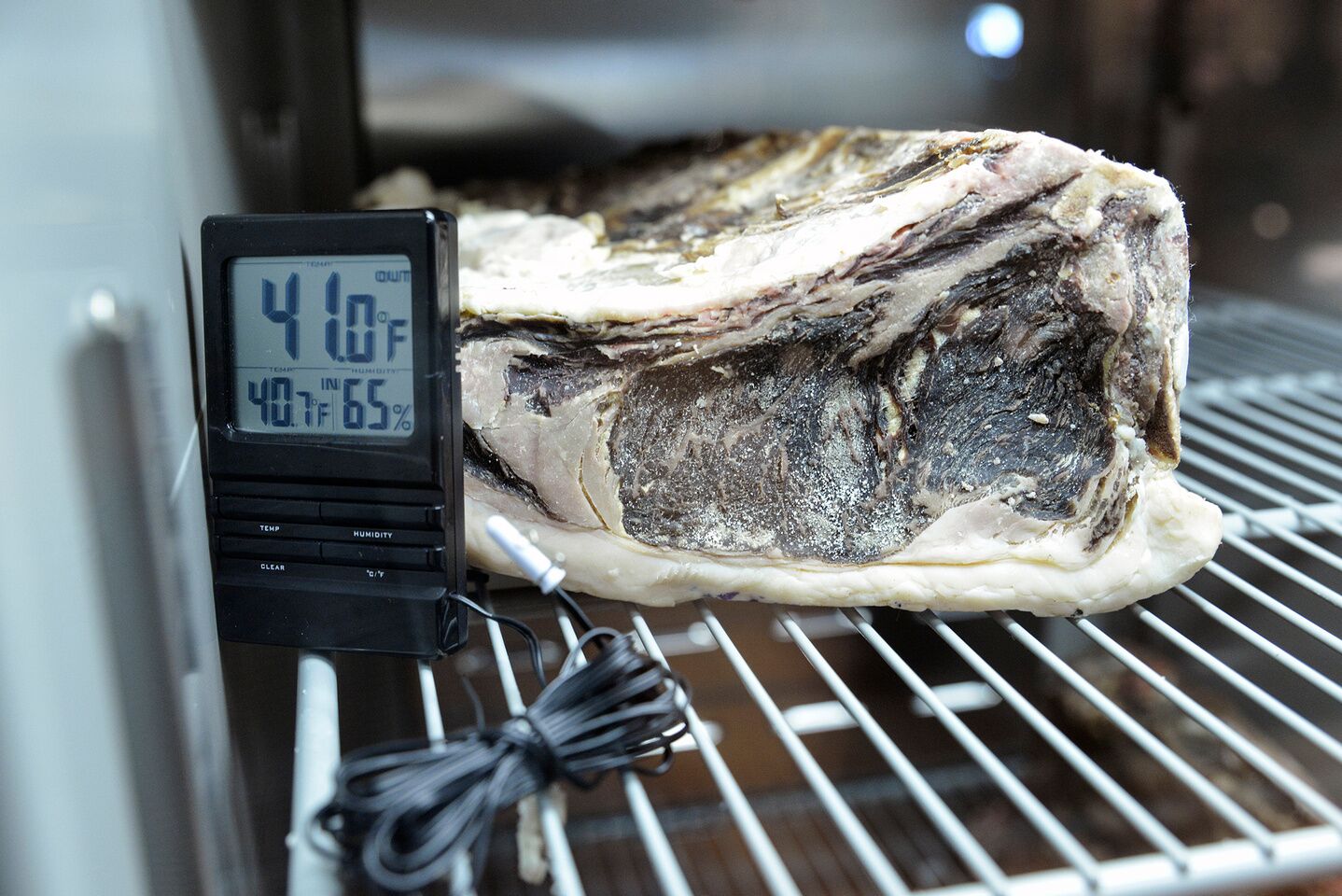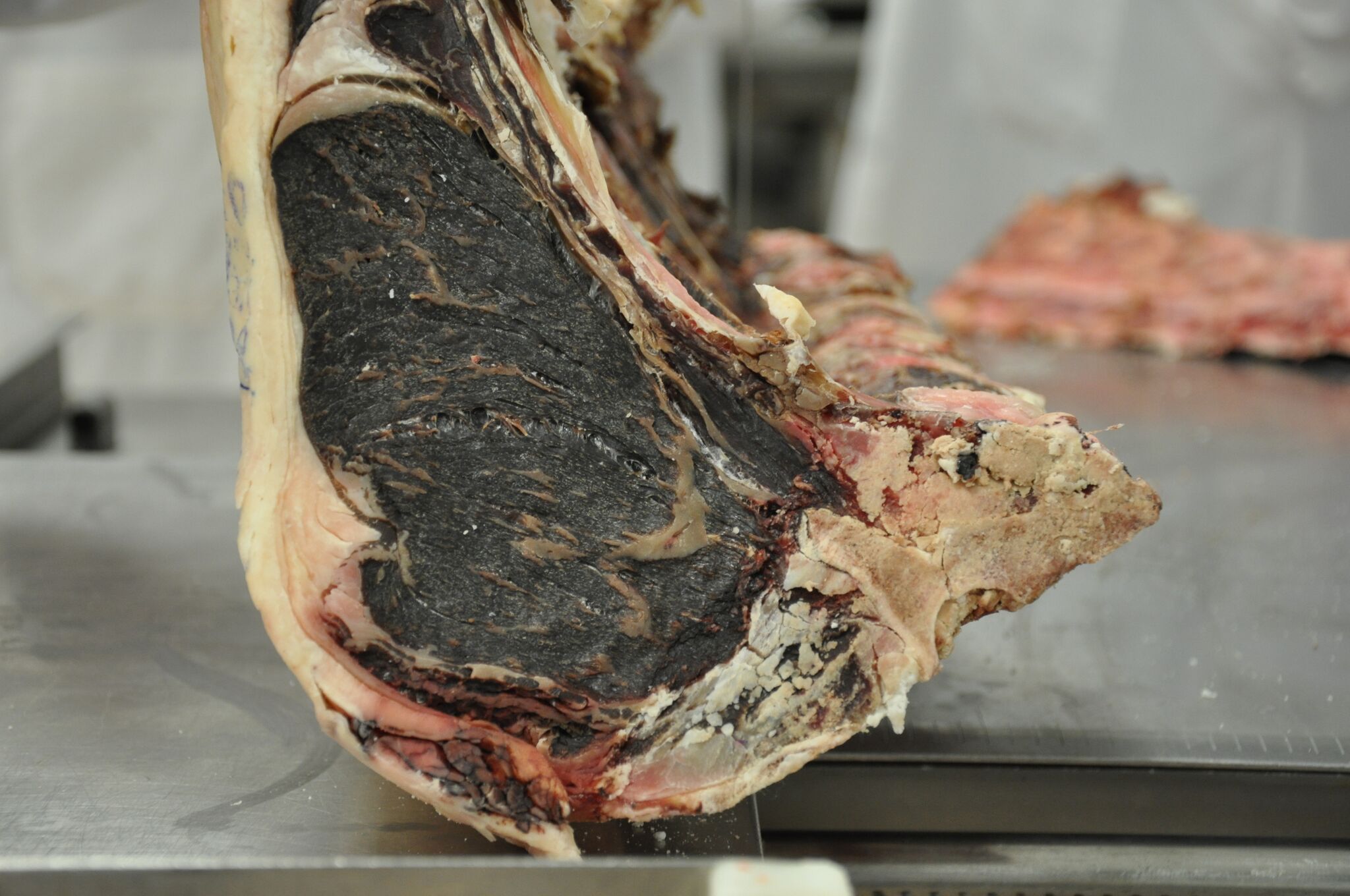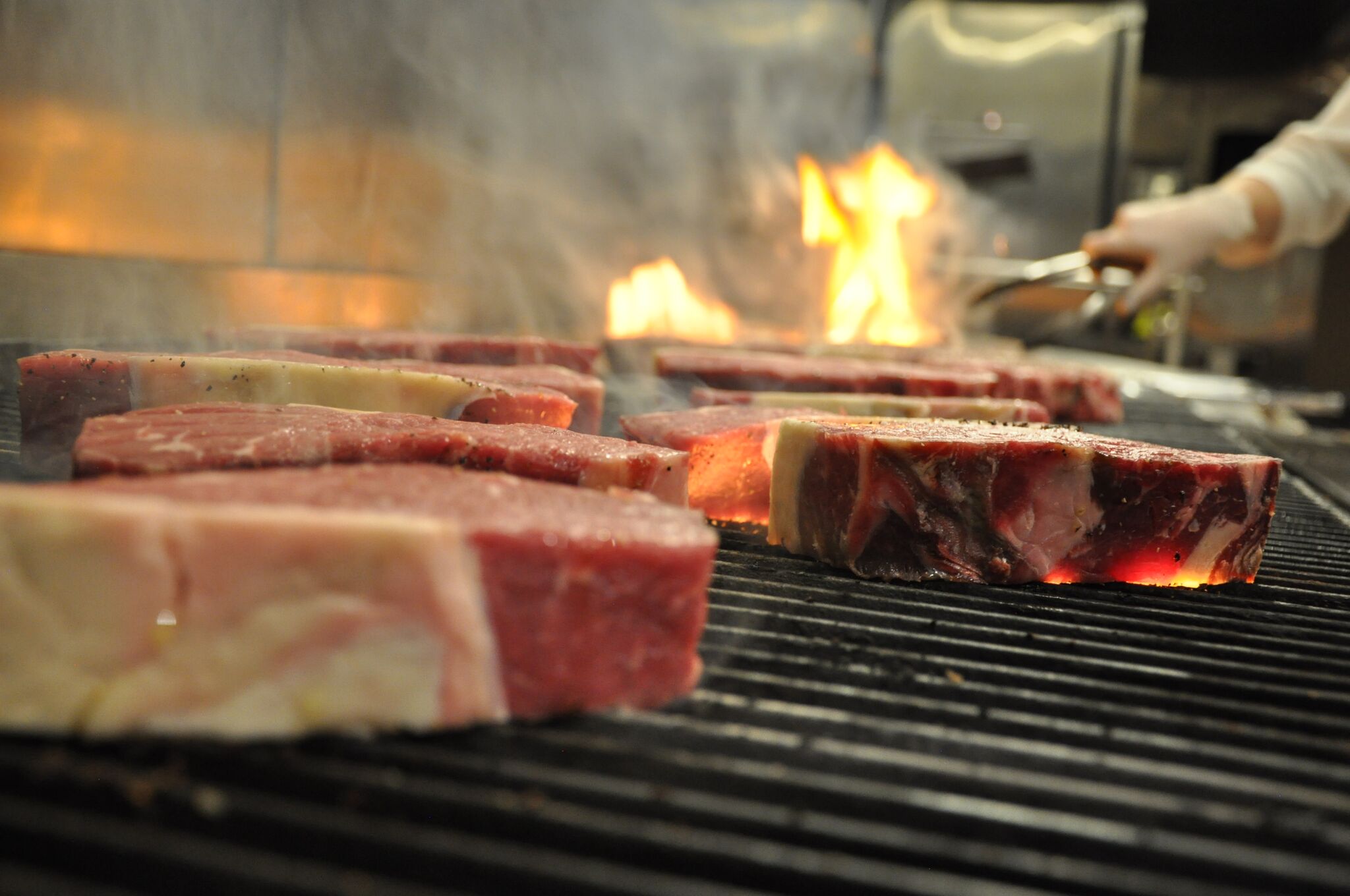
Three steps for dry-aged beef
Let’s start with the basics of aging
Even in restaurants claiming to have “fresh” beef, most has been aged to some extent. Wet-aged: beef that’s been stored inside a vacuum package in a cooler for a few weeks, allowing the naturally-occurring enzymes within the meat to break down muscle fibers and create tenderness. With wet aging, what goes into a bag is pretty much what comes out of the bag, only more tender. Know that this enzymatic activity, however, occurs regardless of the environment — wet-aged, dry-aged or otherwise. So, to a certain extent, the longer beef ages in general the more tender it will become.

Now let’s talk about dry aging
This is what dry aging looks like. Beef just hanging out on a shelf inside a dry-aging cooler getting crusty. Better bring some popcorn, it’s gonna be a long viewing. Three things need to happen inside the meat during the dry-aging process:
#1: Time.
Allow time for the naturally-occurring enzymes to do their thing, thus making the beef more tender. If this is new information to you, then you just skipped the 249 words preceding this. Shame on you.

#2: Dehydration.
Unlike its wet-aged brethren, confined to an air-tight bag, dry-aged beef is free to explore its environment, including the encouraged evaporation of moisture from within the cut. And, while this is responsible for much of the darkening of its crust, what’s left inside is intense, beefy flavor, concentrated from the dehydration. The need to trim off that crust before cooking means significant yield loss, however, a big reason why dry-aged beef is so pricey.

#3 Mold.
This is the trickiest part of dry-aging, and the key difference between truly dry-aged vs. just dehydrated. Folks may not hold degrees in any kind of mold-related science, but it’s generally understood that in different parts of the country there are different kinds of molds. Despite their reputation, molds truly bring the funk; they are the critical element to the dry-aging process because they impart certain flavors. So, depending on your zip code, those molds and the flavors they create are going to be different.

New York City is the dry-aging capitol of the world, but Los Angeles has its own level of funk. In between is the CAB Culinary Center in Ohio, where meat scientist Dr. Phil Bass says, while the process of dry-aging has been going on for centuries, we’re still, continually learning more.
It wasn’t too long ago that the food industry — and health inspectors fearful of molds — nearly science’d itself out of this incredible process. Approved aging techniques, then designed to stop mold rather than promote it, may still be limiting the addition of other desirable flavors.

Fortunately, the pendulum swings back toward tradition and we can find more dry-aged beef today. Even high-end grocery stores, like Market District in Ohio and Pennsylvania, have added coolers specifically for dry-aging.
While “artisanal,” “old world” and “earthy” may be correct, you now know exactly why dry-aged beef is a delicacy worth trying.

May all your salads be meaty,
Bryan
You may also like
$100,000 Up for Grabs with 2024 Colvin Scholarships
Certified Angus Beef is offering $100,000 in scholarships for agricultural college students through the 2024 Colvin Scholarship Fund. Aspiring students passionate about agriculture and innovation, who live in the U.S. or Canada, are encouraged to apply before the April 30 deadline. With the Colvin Scholarship Fund honoring Louis M. “Mick” Colvin’s legacy, Certified Angus Beef continues its commitment to cultivating future leaders in the beef industry.
Raised with Respect™ Cattle Care Campaign Launched This Fall
Raised with Respect™ was developed as part of a strategic cattle care partnership between Sysco and CAB. The collaboration focuses on supporting farmers and ranchers, equipping them with continuing education to stay current on best management practices and helping to increase consumer confidence in beef production.
Quality Wins, Again
Sara Scott, Vice President of Foodservice for Certified Angus Beef, emphasizes the importance of taste over price in the beef market during the Feeding Quality Forum. As consumer demand for high-quality beef grows, Scott highlights the need for increased supply and encourages communication with packer partners to meet the demand for Prime beef.



